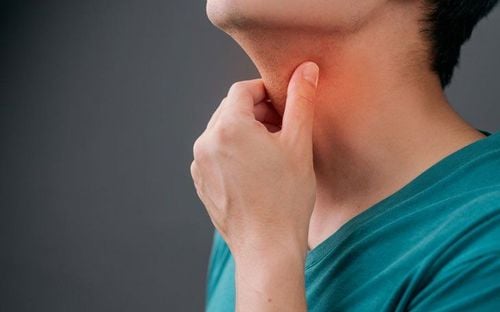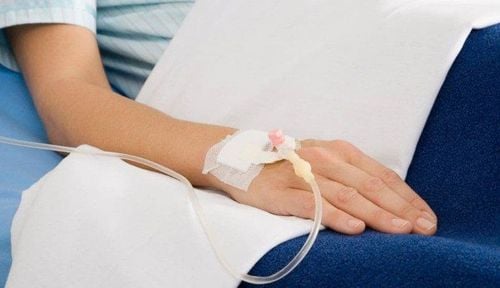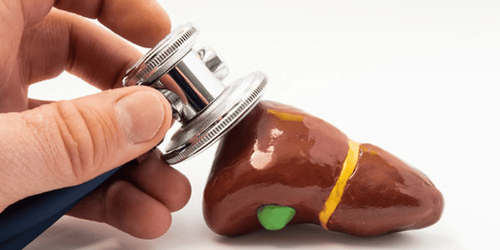This is an automatically translated article.
The article was written by Doctor Trinh Ngoc Duy - Emergency Department - Vinmec Times City International Hospital.Foreign body in the airway is when there are abnormal substances (water, food, objects, ...) enter the airways. Choking is when a foreign body obstructs a person's airways because they are unable to breathe because something is blocking the airway.
1. Overview
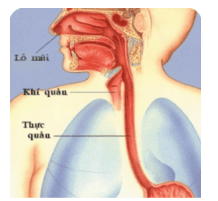
Normally, the lower airway (under the epiglottis) is covered and protected by the epiglottis. When drinking water and swallowing food, the food and drink will go into the esophagus and then into the stomach; without being able to enter the airways. Coughing is a natural response of the body, usually coughing continuously until the foreign body is cleared from the airway.
2. Handling small foreign bodies

Small foreign bodies are usually grains of rice, water, small food samples, small objects .... The victim is eating, drinking, holding objects in the mouth .... suddenly coughing continuously If the victim can still cough , speak: encourage them to continue coughing until the object is expelled Take the victim to the hospital
3. Handling large foreign bodies – choking
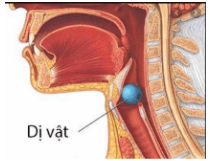
Large foreign bodies in the airways often cause near-total or complete airway obstruction (suffocation).
3.1. Signs of suffocation Patient holds his neck Unable to speak, cry or make sounds Difficulty breathing Unable to cough Lips, tongue, face turn purple, blue-violet Unconscious if choking for a long time 3.2. First aid choking
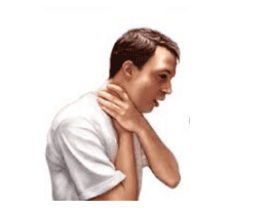
3.2.1. Assessment Assess whether the scene is safe Ask the patient: “Are you choking or choking? Can you say no?”. Usually if the victim cannot speak, he can only signal by nodding his head. 3.2.2. Plan If the victim is unable to speak, call for additional help. Initiate a plan to transport the victim to the nearest medical facility 3.2.3. Action If the casualty is able to speak, cough or breathe: Encourage the patient to cough. Encouragement: “Keep coughing constantly”. A strong cough can expel the foreign body.
If victim cannot speak, cannot cough, cannot breathe:
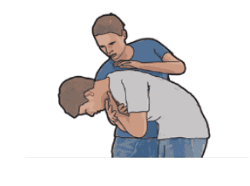
Perform back-slapping and abdominal thrusts:
+ Back-slapping: Clap 5 times firmly between the shoulder blades with your hand. Check to see if the foreign body is expelled after patting the back
+ Abdominal compression: standing behind the victim's back, use both hands to quickly press up and back, 5 times in a row.
Check to see if the foreign body is expelled after abdominal compression:
Perform 5 consecutive back blows, 5 abdominal thrusts until the object is expelled and the victim can breathe, cough or speak
If the victim becomes unconscious, not breathing, can't feel the pulse, perform CPR 3.2.4. Evaluation Perform the correct back blow technique - abdominal thrusts in cycles of 5-5, until the foreign body is expelled and the victim is able to breathe, cough, or speak.
Monitor the victim's condition and transport to a medical facility.
3.3. Choking first aid for pregnant women and obese people
Proceed in the same way as above. However, there is a difference: continue chest compressions, not abdominal thrusts. Place your hand on the lower part of the sternum (lower part of the chest) Quickly pull back and up; 5 times in a row Repeat until the object is expelled and the victim is able to breathe, cough or speak 3.4. First aid for choking in babies (under 1 year old)
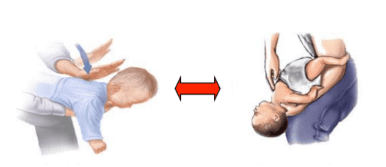
First aid assessment and planning steps for choking in infants are the same as in adults. However, babies under 1 year old can't speak
Signs of choking in babies:
Can't cry, can't make a lot of sounds Blue-violet face Difficulty breathing Practice
Place baby on stomach, head low, back pat 5 times to help expel the foreign body If the foreign body does not come out, turn the child to lie on his or her back, with the baby's head low. Use 2 fingers to give chest compressions 5 times Repeat 5 back pats and 5 chest compressions, until the foreign body is expelled, the child can breathe, cough or cry If the child begins to lose consciousness, not breathing, feel no pulse visible; perform circulatory arrest
Please dial HOTLINE for more information or register for an appointment HERE. Download MyVinmec app to make appointments faster and to manage your bookings easily.





